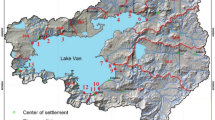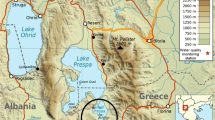Abstract
Accurate quantification of lake areas is pivotal for understanding regional hydrological cycles and conserving wetlands. Existing methodologies, including remote sensing interpretations and conventional deep learning approaches, face inherent limitations. Addressing this, the present study introduces an innovative deep learning model for lake area prediction, incorporating physical mechanisms. Initially, the study extracts the monthly areas of East Dongting Lake over 2000 to 2020, utilizing the Google Earth Engine (GEE) platform. Subsequently, it integrates water level data from Chenglingji, developing a response relationship between area and water level. This process enhances the loss function of the traditional Long Short-Term Memory (LSTM) model, leading to the creation of a physically informed Area and Water Level-LSTM model (AWL-LSTM). This model is then assessed in comparison to its traditional LSTM counterpart.The findings reveal a pronounced shrinking trend in the water area of East Dongting Lake over the past two decades, characterized by significant seasonal fluctuations. In periods of rising, high, and receding water levels, the lake's area exhibits a robust correlation with the Chenglingji water levels. However, this correlation weakens during low water periods. The AWL-LSTM model outperforms the conventional LSTM in several aspects, including extensibility, precision, interpretability, and stability. It demonstrates superior accuracy in peak data series fitting, evidenced by a 34% and 28% improvement in the Nash-Sutcliffe Efficiency Coefficient (NSE) and significant reductions in the Root Mean Square Error (RMSE) and Mean Absolute Error (MAE) by 77% and 80%, respectively. By integrating the characteristics of the “dry, rising, abundant, and receding” periods under the constraint of physical relationships, the model’s correction effect depends on the correlation of these physical relationships. A higher correlation translates to greater model interpretability. The AWL-LSTM model offers valuable technological support for scientifically forecasting lake areas and managing water resources efficiently.









Similar content being viewed by others
Data availability
No datasets were generated or analysed during the current study.
References
Alexandridis TK, Ovakoglou G, Clevers JG (2020) Relationship between MODIS EVI and LAI across time and space. Geocarto Int 35(13):1385–1399. https://doi.org/10.1080/10106049.2019.1573928
Ali A, Dunlop P, Coleman S, Kerr D, McNabb RW, Noormets R (2023) Glacier area changes in Novaya Zemlya from 1986–89 to 2019–21 using object-based image analysis in Google Earth Engine. J Glaciol 1–12. https://doi.org/10.1017/jog.2023.18
Azarang A, Kehtarnavaz N (2021) Application of deep learning models in nonlinear detail map prediction in pansharpening. J Comput Sci 54:101431. https://doi.org/10.1016/j.jocs.2021.101431
Babaeian E, Paheding S, Siddique N, Devabhaktuni VK, Tuller M (2022) Short-and mid-term forecasts of actual evapotranspiration with deep learning. J Hydrol 612:128078. https://doi.org/10.1016/j.jhydrol.2022.128078
Chen H, Huang JJ, Dash SS, Wei Y, Li H (2022) A hybrid deep learning framework with physical process description for simulation of evapotranspiration. J Hydrol 606:127422. https://doi.org/10.1016/j.jhydrol.2021.127422
Cheng J, Xu L, Wang X, Jiang J, You H (2018) Assessment of hydrologic alteration induced by the three Gorges Dam in Dongting Lake, China. River Res Appl 34(7):686–696. https://doi.org/10.1002/rra.3297
Dai M, Wang J, Zhang M, Chen X (2017) Impact of the Three Gorges Project operation on the water exchange between Dongting Lake and the Yangtze River. Int J Sedim Res 32(4):506–514. https://doi.org/10.1016/j.ijsrc.2017.02.006
Dai X, Yang G, Wan R, Li Y (2018) The effect of the Changjiang River on water regimes of its tributary Lake East Dongting. J Geog Sci 28:1072–1084. https://doi.org/10.1007/s11442-018-1542-5
Ekpetere K, Abdelkader M, Ishaya S, Makwe E, Ekpetere P (2023) Integrating satellite imagery and ground-based measurements with a machine learning model for monitoring lake dynamics over a semi-arid region. Hydrology 10(4):78. https://doi.org/10.3390/hydrology10040078
Emmer A, Merkl S, Mergili M (2015) Spatiotemporal patterns of high-mountain lakes and related hazards in western Austria. Geomorphology 246:602–616. https://doi.org/10.1016/j.geomorph.2015.06.032
Gorelick N, Hancher M, Dixon M, Ilyushchenko S, Thau D, Moore R (2017) Google Earth Engine: planetary-scale geospatial analysis for everyone. Remote Sens Environ 202:18–27. https://doi.org/10.1016/j.rse.2017.06.031
Guo D, Shi W, Qian F, Wang S, Cai C (2022) Monitoring the spatiotemporal change of Dongting Lake wetland by integrating Landsat and MODIS images, from 2001 to 2020. Eco Inform 72:101848. https://doi.org/10.1016/j.ecoinf.2022.101848
He Y, Yao S, Yang W, Yan H, Zhang L, Wen Z, Zhang Y, Liu T (2021) An extraction method for glacial lakes based on Landsat-8 imagery using an improved U-Net network. IEEE J Sel Top Appl Earth Obs Remote Sens 14:6544–6558. https://doi.org/10.1109/JSTARS.2021.3085397
Holden CE, Woodcock CE (2016) An analysis of Landsat 7 and Landsat 8 underflight data and the implications for time series investigations. Remote Sens Environ 185:16–36. https://doi.org/10.1016/j.rse.2016.02.052
Hu C, Fang C, Cao W (2015) Shrinking of Dongting Lake and its weakening connection with the Yangtze River: analysis of the impact on flooding. Int J Sedim Res 30(3):256–262. https://doi.org/10.1016/j.ijsrc.2014.05.001
Hu C, Li F, Xie YH, Deng ZM, Chen XS (2018) Soil carbon, nitrogen, and phosphorus stoichiometry of three dominant plant communities distributed along a small-scale elevation gradient in the East Dongting Lake. Phys Chem Earth A/B/C 103:28–34. https://doi.org/10.1016/j.pce.2017.04.001
Jing L, Lu C, Xia Y, Shi L, Zuo A, Lei J, Zhang H, Lei G, Wen L (2017) Effects of hydrological regime on development of Carex wet meadows in East Dongting Lake, a Ramsar Wetland for wintering waterbirds. Sci Rep 7(1):41761. https://doi.org/10.1038/srep41761
Ke W, Chen C, Ji H et al (2017) The correlation between the water surface area of Dongting Lake and the water level at Chenglingji. J Lake Sci 29(03):753–764
Kulkarni R, Khare K, Khanum H (2022) Detecting, extracting, and mapping of inland surface water using Landsat 8 Operational Land Imager: a case study of Pune district, India. F1000Research 11. https://doi.org/10.12688/f1000research.121740.1
Li X, Zhang D, Jiang C, Zhao Y, Li H, Lu D, Qin K, Chen D, Liu Y, Sun Y, Liu S (2022a) Comparison of lake area extraction algorithms in Qinghai Tibet Plateau leveraging Google Earth Engine and Landsat-9 data. Remote Sensing 14(18):4612. https://doi.org/10.3390/rs14184612
Li K, Wang J, Cheng W, Wang Y, Zhou Y, Altansukh O (2022b) Deep learning empowers the Google Earth Engine for automated water extraction in the Lake Baikal Basin. Int J Appl Earth Obs Geoinf 112:102928. https://doi.org/10.1016/j.jag.2022.102928
Liang C, Li H, Lei M, Du Q (2018) Dongting lake water level forecast and its relationship with the three gorges dam based on a long short-term memory network. Water 10(10):1389. https://doi.org/10.3390/w10101389
Liu Y, Li J, Yan D, Chen L, Li M, Luan Z (2023) Typical vegetation dynamics and hydrological changes of Dongting Lake wetland from 1985 to 2020. Ecohydrol Hydrobiol. https://doi.org/10.1016/j.ecohyd.2023.04.008
Luo X, Liu P, Dong Q, Zhang Y, Xie K, Han D (2023) Exploring the role of the long short-term memory model in improving multi-step ahead reservoir inflow forecasting. J Flood Risk Manag 16(1):e12854. https://doi.org/10.1111/jfr3.12854
Marçais J, de Dreuzy JR (2017) Prospective interest of deep learning for hydrological inference. Groundwater 55:688–692. https://doi.org/10.1111/gwat.12557
Mazzarino M, Finn JT (2016) An NDVI analysis of vegetation trends in an Andean watershed. Wetlands Ecol Manage 24:623–640. https://doi.org/10.1007/s11273-016-9492-0
Ou C, Li J, Zhou Y, Cheng W, Yang Y, Zhao Z (2014) Evolution characters of water exchange abilities between Dongting Lake and Yangtze River. J Geog Sci 24:731–745. https://doi.org/10.1007/s11442-014-1116-0
Peng Y, He G, Wang G, Cao H (2021) Surface water changes in Dongting lake from 1975 to 2019 based on multisource remote-sensing images. Remote Sens 13(9):1827. https://doi.org/10.3390/rs13091827
Sha T, Yao X, Wang Y, Tian Z (2022) A quick detection of lake area changes and hazard assessment in the Qinghai-Tibet Plateau based on GEE: a case study of Tuosu Lake. Front Earth Sci 10:934033. https://doi.org/10.3389/feart.2022.934033
Sit M, Demiray BZ, Xiang Z, Ewing GJ, Sermet Y, Demir I (2020) A comprehensive review of deep learning applications in hydrology and water resources. Water Sci Technol 82(12):2635–2670. https://doi.org/10.2166/wst.2020.369
Thati J, Ari S (2022) A systematic extraction of glacial lakes for satellite imagery using deep learning based technique. Measurement 192:110858. https://doi.org/10.1016/j.measurement.2022.110858
Wang X, Wang X (2020) Spatiotemporal fusion of remote sensing image based on deep learning. J Sens 2020:1–11. https://doi.org/10.1155/2020/8873079
Wang W, Sui B, Lin N, Chen T (2020) Study on the area changes of Dongting Lake based on landsat remote sensing data. Adv Meteorol Sci Technol 03:128–132
Wang C, Jiang W, Deng Y, Ling Z, Deng Y (2021) Long time series water extent analysis for SDG 6.6. 1 based on the GEE platform: a case study of Dongting Lake. IEEE J Sel Top Appl Earth Obs Remote Sens 15:490–503. https://doi.org/10.1109/JSTARS.2021.3088127
Wang H, Emmerich M, Preuss M, Plaat A (2023) Analysis of hyper-parameters for AlphaZero-like deep reinforcement learning. Int J Inf Technol Decis Mak 22(02):829–853. https://doi.org/10.1142/S0219622022500547
Xu Y, Cheng X, Gun Z (2022) What drive regional changes in the number and surface area of lakes across the Yangtze River Basin During 2000–2019: human or climatic factors?. Water Resour Res 58(2):e2021WR030616. https://doi.org/10.1029/2021WR030616
Yang G, Zhang Q, Wan R, Lai X, Jiang X, Li L, ... Lu Y (2016) Lake hydrology, water quality and ecology impacts of altered river–lake interactions: advances in research on the middle Yangtze river. Hydrol Res 47(S1):1–7. https://doi.org/10.2166/nh.2016.003
Zhang P, Zou Y, Xie Y, Zhang S, Zhu F, Chen X, Li F, Deng Z, Yao Y, Song Y (2021) Phenological mismatch caused by water regime change may explain the population variation of the vulnerable lesser white-fronted goose in east Dongting Lake, China. Ecol Indic 127:107776. https://doi.org/10.1016/j.ecolind.2021.107776
Zhang Y, An CB, Zheng LY, Liu LY, Zhang WS, Lu C, Zhang YZ (2023) Assessment of lake area in response to climate change at varying elevations: a case study of Mt. Tianshan, Central Asia. Sci Total Environ 869:161665. https://doi.org/10.1016/j.scitotenv.2023.161665
Zhao M, Cong P, Barter M, Fox AD, Cao LEI (2012) The changing abundance and distribution of Greater White-fronted Geese Anser albifrons in the Yangtze River floodplain: impacts of recent hydrological changes. Bird Conserv Int 22(2):135–143. https://doi.org/10.1017/S0959270911000542
Zhou Y, Dong J, Xiao X, Liu R, Zou Z, Zhao G, Ge Q (2019) Continuous monitoring of lake dynamics on the Mongolian Plateau using all available Landsat imagery and Google Earth Engine. Sci Total Environ 689:366–380. https://doi.org/10.1016/j.scitotenv.2019.06.341
Zhu Y, Wang H, Guo W (2021) The impacts of water level fluctuations of East Dongting Lake on habitat suitability of migratory birds. Ecol Ind 132:108277. https://doi.org/10.1016/j.ecolind.2021.108277
Funding
This research received funding from the Hubei Key Laboratory of Intelligent Yangtze and Hydroelectric Science, China Yangtze Power Co., Ltd. open research fund, Fund number: ZH2102000111.
Author information
Authors and Affiliations
Contributions
Conceptualization, Yanfei.Chen. , Yuru.Dong.and Yongxi.Sun; methodology, Yuru.Dong. and Yongxi.Sun; software, Yuru.Dong. and Yongxi.Sun; formal analysis, Yuru.Dong.; investigation, Yanfei.Chen.; resources, Yanfei.Chen.; data curation, Yuru.Dong.; writing—original draft preparation, Yuru.Dong.and Yongxi.Sun.; writing—review and editing, Chao.He. and Yanfei.Chen.
Corresponding author
Ethics declarations
Competing interests
The authors declare no competing interests.
Additional information
Communicated by: H. Babaie
Publisher's Note
Springer Nature remains neutral with regard to jurisdictional claims in published maps and institutional affiliations.
Rights and permissions
Springer Nature or its licensor (e.g. a society or other partner) holds exclusive rights to this article under a publishing agreement with the author(s) or other rightsholder(s); author self-archiving of the accepted manuscript version of this article is solely governed by the terms of such publishing agreement and applicable law.
About this article
Cite this article
Chen, Y., Dong, Y., Sun, Y. et al. Typical lake area is accurately predicted and assessed based on deep learning algorithms and associated physical mechanisms. Earth Sci Inform (2024). https://doi.org/10.1007/s12145-024-01282-x
Received:
Accepted:
Published:
DOI: https://doi.org/10.1007/s12145-024-01282-x




